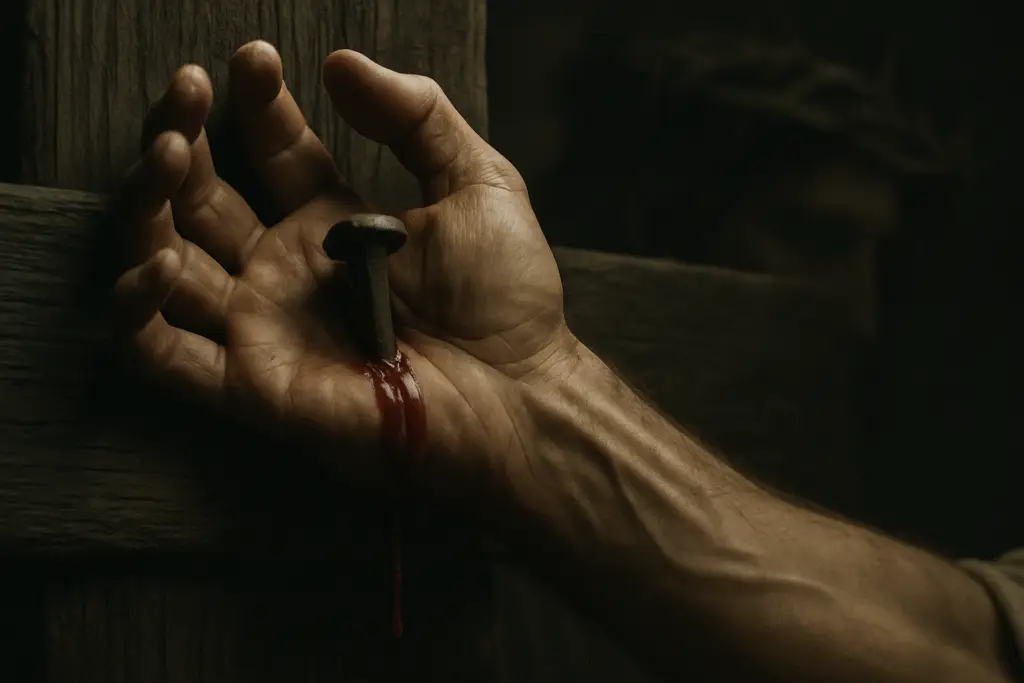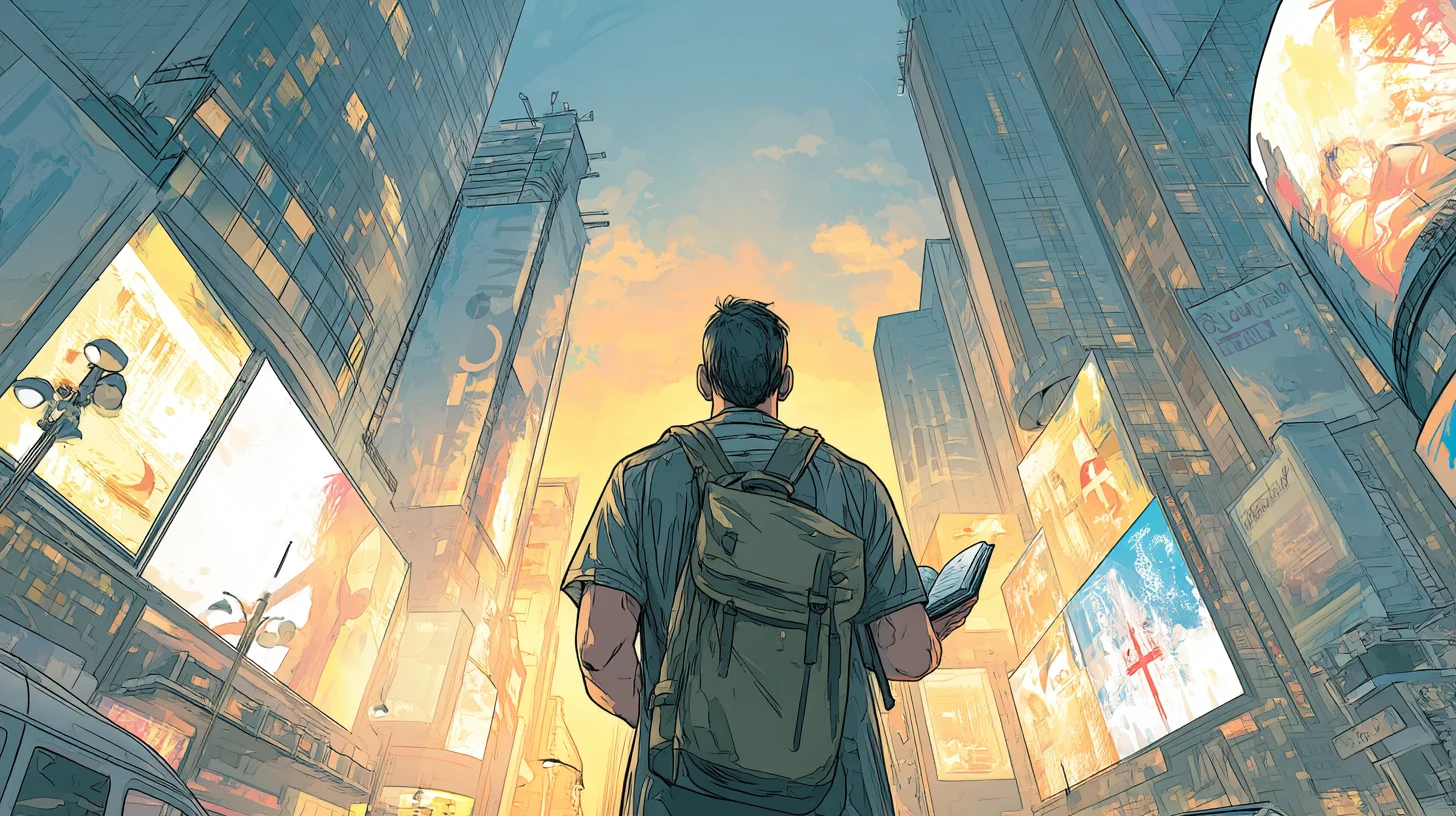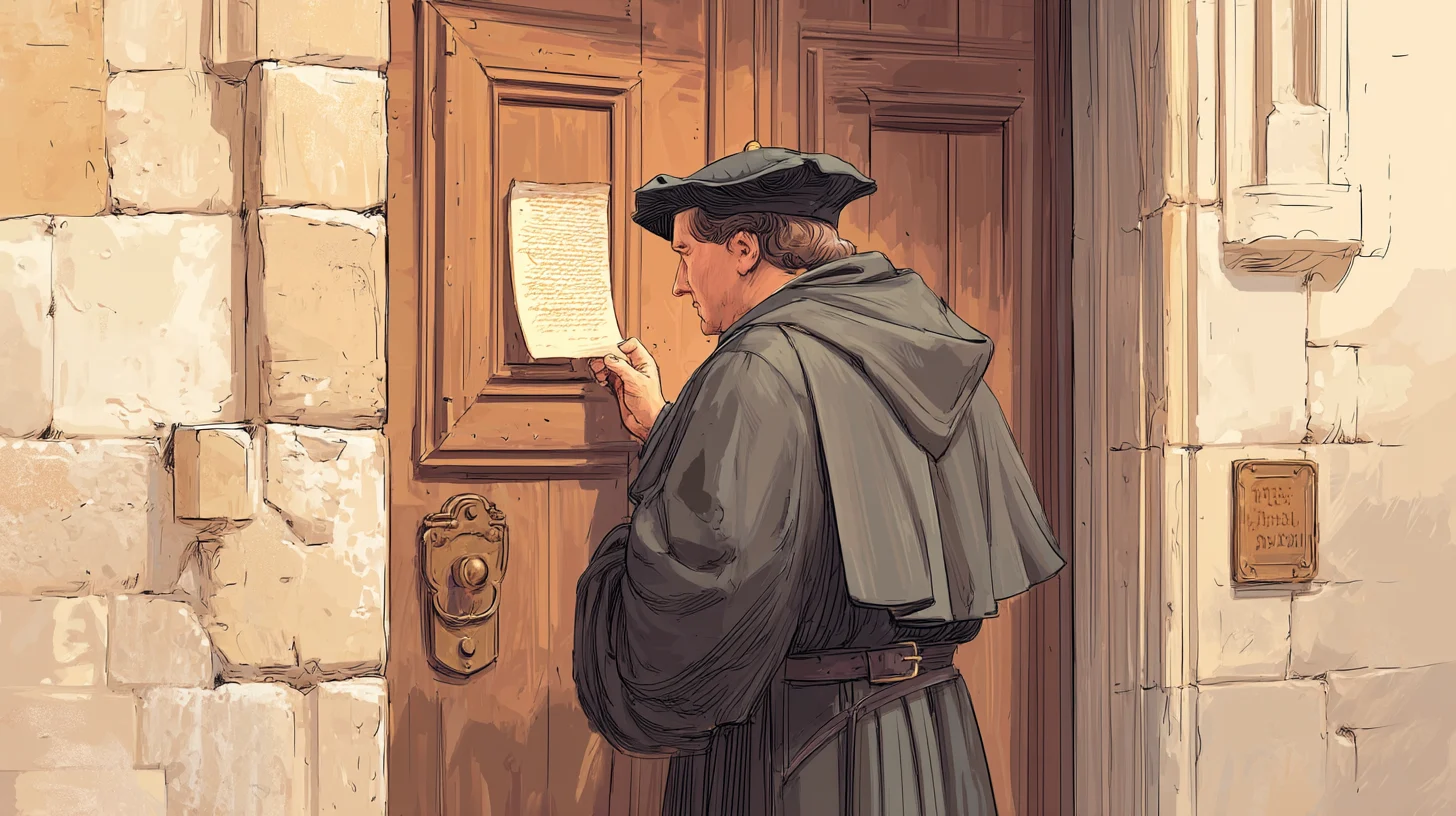The Profound Meaning of Easter: Hope, Renewal, and New Life
Introduction: Easter and the Dawn of Hope
Have you ever experienced that moment when something you thought was completely lost suddenly returned to you? Perhaps it was a cherished relationship you believed was broken beyond repair, or a dream you had reluctantly given up on. Remember that surge of unexpected joy, that rush of hope flooding back after you had resigned yourself to its absence? That experience—that emotional journey from loss to restoration—offers us a small glimpse into the revolutionary hope at the heart of Easter.
Easter stands as the defining moment of the Christian faith. While Christmas celebrates the miracle of God becoming human in Jesus Christ, Easter commemorates something even more extraordinary: death itself being conquered. The resurrection of Jesus represents the single most important event in Christian history—a moment that transforms not just how Christians view death, but how they approach life itself.
As we explore Easter’s deeper meaning, we’re examining not just a historical event that happened roughly 2,000 years ago, but a living reality that continues to transform lives today. The Easter story speaks to our deepest human longings: our desire for second chances, our hope that love is stronger than death, and our intuition that there must be more to our existence than what we can physically see and touch.
The Biblical Foundation: From Crucifixion to Resurrection
The Easter narrative unfolds during the Jewish Passover festival in Jerusalem, approximately 33 AD. Jesus, after three years of public ministry, entered Jerusalem to crowds welcoming him as a king. Within days, however, the situation dramatically reversed.
The Crucifixion

Following his arrest in the Garden of Gethsemane, Jesus endured a series of unjust trials before Jewish religious authorities and Roman officials. Despite finding no legitimate charge against him, the Roman governor Pontius Pilate ultimately sentenced Jesus to crucifixion—the empire’s most brutal form of execution, reserved for the worst criminals.
The Gospel of Luke describes the crucifixion with painful simplicity: “When they came to the place called the Skull, they crucified him there, along with the criminals—one on his right, the other on his left” (Luke 23:33). Jesus, after hours of suffering, spoke his final words: “Father, into your hands I commit my spirit” (Luke 23:46). The Gospel of Mark records that at the moment of his death, “The curtain of the temple was torn in two from top to bottom” (Mark 15:38)—a symbolic representation that the barrier between God and humanity had been removed.
For Jesus’s followers, this moment represented the death not just of their teacher and friend, but of their hopes and dreams. As two disciples later expressed while walking to Emmaus, “We had hoped that he was the one who was going to redeem Israel” (Luke 24:21). The past tense speaks volumes—they believed the story had ended.
The Burial
Joseph of Arimathea, a secret follower of Jesus and member of the Jewish council, requested Jesus’s body from Pilate. John’s Gospel tells us: “Taking Jesus’s body, the two of them [Joseph and Nicodemus] wrapped it, with the spices, in strips of linen. This was in accordance with Jewish burial customs” (John 19:40). They placed Jesus in a new tomb cut out of rock, rolled a stone across the entrance, and departed as the Sabbath began.
The tomb was sealed and guarded at the request of the religious authorities, who remembered Jesus’s prediction that he would rise again. Matthew records: “So they went and made the tomb secure by putting a seal on the stone and posting the guard” (Matthew 27:66). The disciples, meanwhile, hid behind locked doors, fearing they might be next to be executed.
The Resurrection
Early Sunday morning, everything changed. The Gospel of Mark recounts: “Very early on the first day of the week, just after sunrise, they [the women] were on their way to the tomb… But when they looked up, they saw that the stone, which was very large, had been rolled away” (Mark 16:2, 4).

Inside, instead of Jesus’s body, they encountered an angel who announced: “He is not here; he has risen, just as he said” (Matthew 28:6). John’s Gospel provides the moving account of Mary Magdalene’s personal encounter with the risen Jesus, whom she initially mistook for a gardener until he spoke her name (John 20:11-18).
Over the next forty days, Jesus appeared to hundreds of people. The apostle Paul later summarized these appearances: “He appeared to Cephas [Peter], then to the Twelve. After that, he appeared to more than five hundred of the brothers and sisters at the same time, most of whom are still living, though some have fallen asleep” (1 Corinthians 15:5-6).
These appearances transformed the disciples from fearful, hiding followers into bold proclaimers of the resurrection. The book of Acts shows their complete transformation—the same Peter who had denied knowing Jesus now stood publicly in Jerusalem declaring: “God has raised this Jesus to life, and we are all witnesses of it” (Acts 2:32).
Historical Context: From Jewish Passover to Christian Easter
The timing of Jesus’s death and resurrection during Passover was deeply significant. Passover commemorated God delivering the Israelites from slavery in Egypt, particularly the night when the angel of death “passed over” the homes of Israelites who had marked their doorposts with lamb’s blood.
Early Christians saw Jesus as the ultimate Passover lamb. Paul explicitly makes this connection: “For Christ, our Passover lamb, has been sacrificed” (1 Corinthians 5:7). Jesus’s blood, like the Passover lamb’s, marked believers for salvation from death.
The earliest Christians—who were primarily Jewish—continued celebrating Passover but with new meaning centered on Jesus’s death and resurrection. They gathered on the first day of the week (Sunday, the day of resurrection) rather than the Sabbath (Saturday) to break bread together and commemorate Jesus’s sacrifice and victory.
The actual term “Easter” likely derives from “Eastre,” an Anglo-Saxon spring goddess. As Christianity spread through Europe, the celebration of Jesus’s resurrection became associated with this pre-existing spring festival. The Church adapted the name while completely transforming its meaning and significance. By the second century, the annual celebration of Easter had become the central festival of the Christian calendar.
The Theological Meaning: What Easter Reveals About God and Us
Easter isn’t simply about a man returning from the dead—extraordinary as that would be. It’s about who that man was and what his resurrection means for humanity and the entire created order.
Confirmation of Jesus’s Identity
Jesus had made extraordinary claims about his identity, declaring “I and the Father are one” (John 10:30) and accepting worship as divine. The resurrection served as divine confirmation of these claims. As Paul writes in Romans, Jesus “was declared to be the Son of God in power according to the Spirit of holiness by his resurrection from the dead” (Romans 1:4).
Victory Over Sin and Death
The New Testament consistently portrays Easter as God’s definitive victory over the powers of sin and death. Paul explains: “The sting of death is sin, and the power of sin is the law. But thanks be to God! He gives us the victory through our Lord Jesus Christ” (1 Corinthians 15:56-57).
In his death, Jesus bore the consequences of human sin. Isaiah prophetically described this centuries earlier: “He was pierced for our transgressions, he was crushed for our iniquities; the punishment that brought us peace was on him, and by his wounds we are healed” (Isaiah 53:5).
Through his resurrection, Jesus demonstrated that death—the ultimate human fear and the consequence of sin—had been conquered. The author of Hebrews explains that Jesus shared in our humanity “so that by his death he might break the power of him who holds the power of death—that is, the devil—and free those who all their lives were held in slavery by their fear of death” (Hebrews 2:14-15).
The Promise of New Creation
Easter points not just backward to an event in history but forward to the complete renewal of creation. Jesus’s resurrected body was the first example of the new creation breaking into the present world. It was physical and recognizable, yet transformed—able to pass through locked doors (John 20:19) yet capable of eating fish (Luke 24:42-43).
Paul describes Jesus as “the firstfruits of those who have fallen asleep” (1 Corinthians 15:20), using agricultural imagery where the first crops harvested guarantee and anticipate the full harvest to come. The resurrection promises that death is not the final word for those who trust in Christ.
Easter in Our Lives Today: Finding Personal Meaning
I remember working with a student named Josh who was dealing with severe depression after a series of painful losses in his life. He felt trapped in a cycle of hopelessness, describing himself as “walking through life in a dark tunnel with no exit.” During an Easter service, something shifted for him when we discussed how the disciples felt on Saturday—the day between crucifixion and resurrection. They experienced the ultimate despair, believing their hope was literally dead and buried.
Josh realized he was living in his own personal “Saturday”—but Easter promised that Sunday was coming. This didn’t instantly solve his depression, but it gave him a framework for hope. “If God can bring life out of an actual tomb,” he told me later, “maybe He can bring something good out of the tomb I feel trapped in.” Over time, with support and counseling, Josh found his own experience of resurrection—not an instantaneous miracle, but a gradual emergence into new life and hope.
This illustrates how Easter speaks to our lived experience in several powerful ways:
Hope in Our Darkest Moments
Easter tells us that our darkest moment—what seems like definitive defeat—can become the doorway to unexpected new life. As Jesus told his disciples: “In this world you will have trouble. But take heart! I have overcome the world” (John 16:33). The resurrection doesn’t promise an absence of suffering but offers the assurance that suffering doesn’t have the final word.
Freedom from Fear
The risen Jesus repeatedly greeted his frightened disciples with “Peace be with you” (John 20:19, 21, 26). Their fear—of death, of the authorities, of the future—was addressed by his living presence. This same peace remains available today. As Paul writes: “For I am convinced that neither death nor life, neither angels nor demons, neither the present nor the future, nor any powers, neither height nor depth, nor anything else in all creation, will be able to separate us from the love of God that is in Christ Jesus our Lord” (Romans 8:38-39).
Purpose and Meaning
If Jesus really rose from the dead, everything changes—including the purpose and direction of our lives. The resurrection validates Jesus’s teaching and calls us to reorient our lives around his kingdom values. Paul expresses this: “Christ’s love compels us, because we are convinced that one died for all, and therefore all died. And he died for all, that those who live should no longer live for themselves but for him who died for them and was raised again” (2 Corinthians 5:14-15).
Sacred vs. Secular: Rediscovering Easter’s Heart
Today’s cultural celebration of Easter often focuses on chocolate bunnies, egg hunts, and spring flowers—all symbols of new life, but disconnected from their spiritual roots. These traditions aren’t inherently problematic—they can be enjoyable ways to celebrate the season—but they risk obscuring Easter’s revolutionary message.
Christians can thoughtfully incorporate these cultural elements while keeping Christ central. For instance, Easter eggs can become teaching tools about new life emerging from what seems lifeless, just as Jesus emerged from the tomb. Spring flowers can remind us of beauty returning after winter’s barrenness, echoing how Jesus brings new life after death’s coldness.
What matters most is not eliminating all secular traditions but ensuring they don’t replace the central story. Many families find balance by participating in egg hunts and Easter baskets while also attending worship, reading the resurrection accounts together, or serving others in remembrance of Christ’s sacrifice.
Conclusion: Easter’s Invitation
Easter extends an invitation to each of us—to move from being spectators of an ancient story to participants in an ongoing reality. The resurrection isn’t simply a happy ending to Jesus’s story; it’s the beginning of a new chapter in the human story, one in which death no longer has the final word.
The question Easter poses is both simple and profound: Do we believe this happened? And if it did, how should that reshape our lives? The earliest Christians were transformed by their conviction that they had encountered the risen Jesus—so much so that many willingly died rather than deny this truth.
For high school students navigating questions of identity, purpose, and meaning, Easter offers a radical perspective: your life has cosmic significance because the Creator of the universe values you enough to die and rise again for you. As Paul writes: “If anyone is in Christ, the new creation has come: The old has gone, the new is here!” (2 Corinthians 5:17).
Whether Easter has been part of your life since childhood or this is your first serious exploration of its meaning, I invite you to consider its claims with both heart and mind engaged. The Easter story has transformed countless lives throughout history—not as a comforting myth or inspiring symbol, but as what Christians claim to be humanity’s defining moment, when death itself was defeated and new creation began.
The empty tomb extends its invitation across two thousand years: to believe, to hope, and to live as people of the resurrection—people who know that love is stronger than death and that, in the end, light overcomes darkness.



